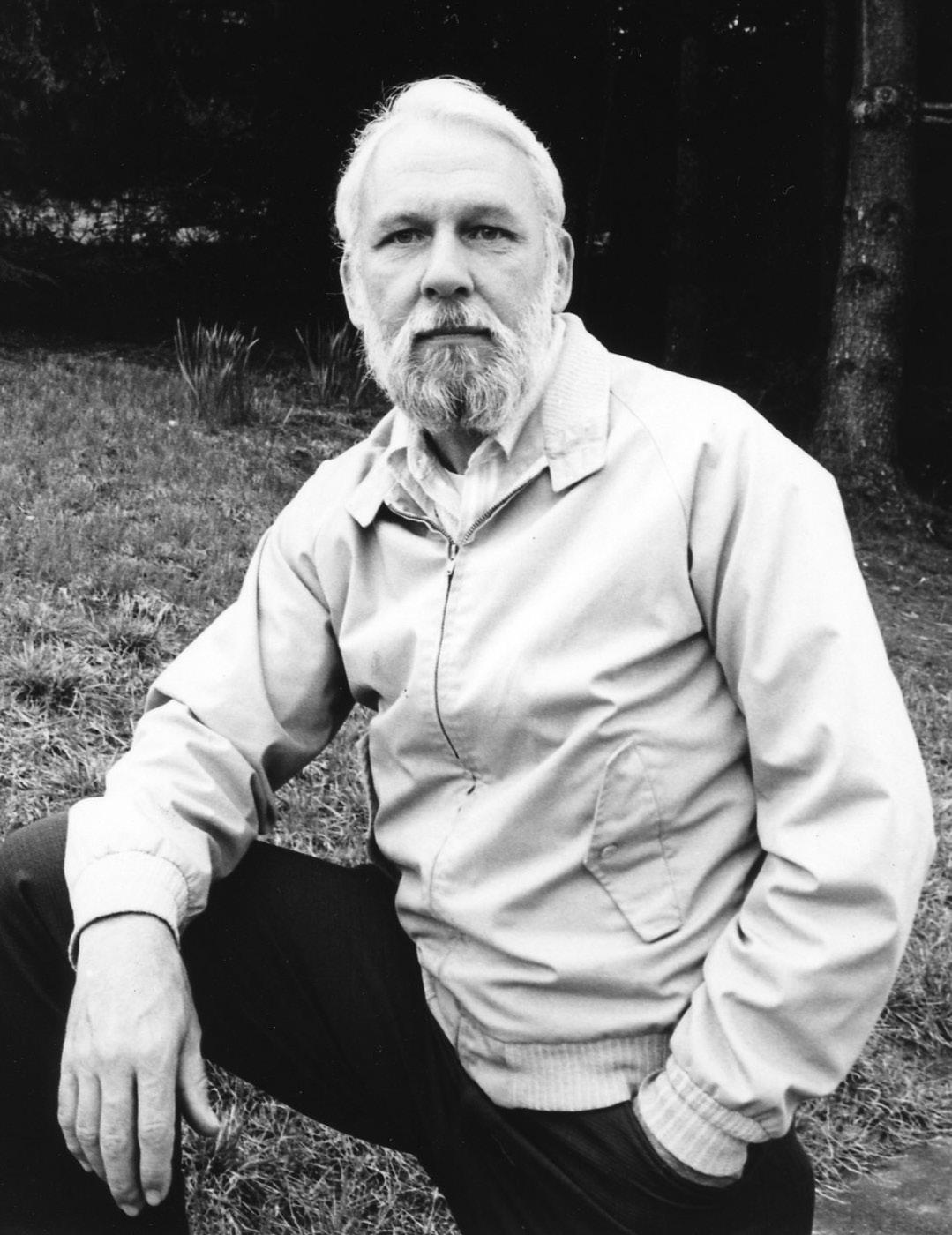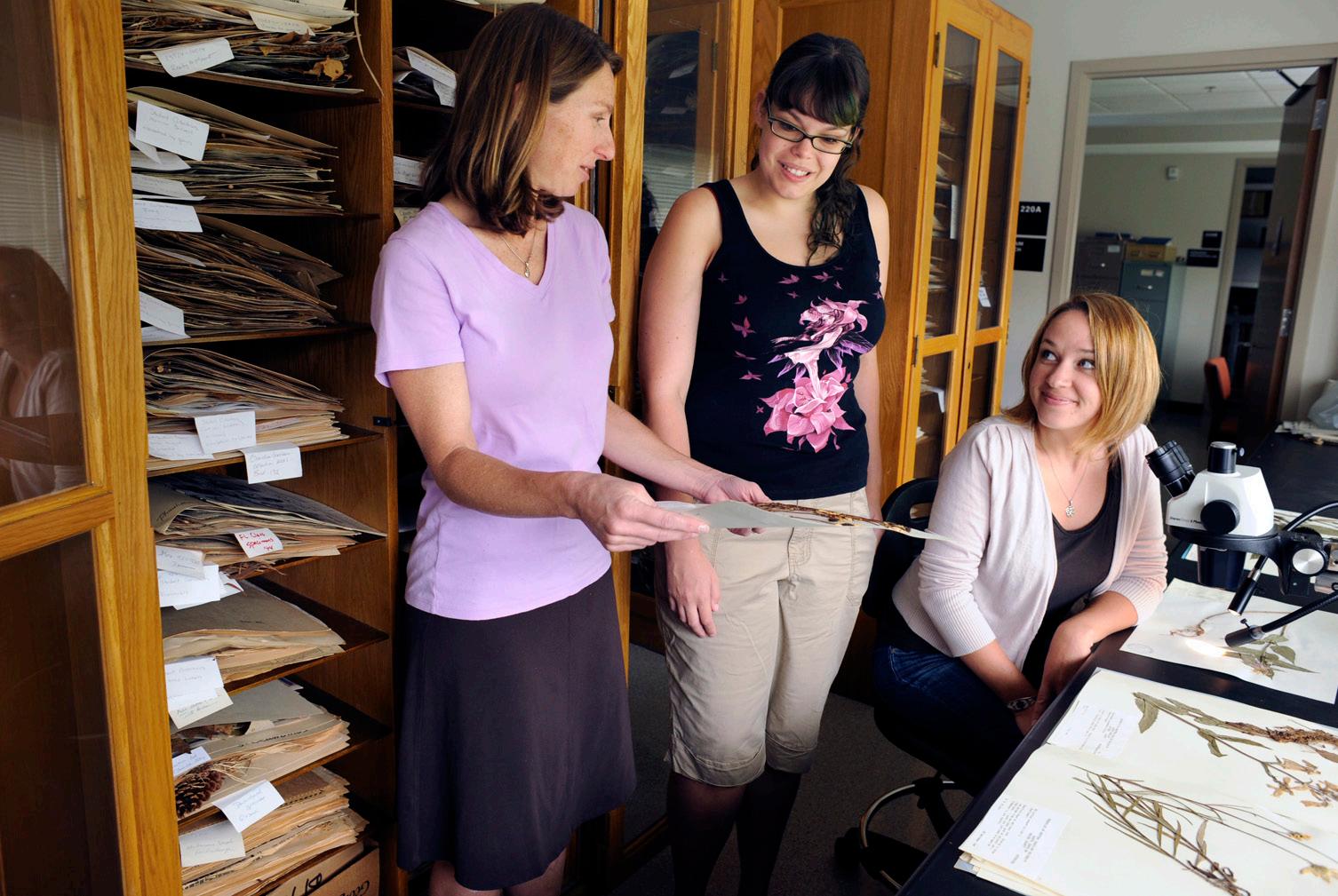
5 minute read
Catamount Biological Collections
Development of the Catamount Biological Collections to Enhance Biodiversity Research and Education in Southern Appalachia
Katherine G. Mathews
Advertisement
The Herbarium of Western Carolina University (WCUH; North Carolina, U.S.A.) is proud to announce the award of a three-year National Science Foundation (NSF) CSBR (Collections in Support of Biological Research; award # 2001683) grant on July 28, 2020, in the amount of $517,282. The bulk of the award is for infrastructure support, including a new compactor system with new metal herbarium cabinets for WCUH, to be installed in the Apodaca Science building opening at Western Carolina University (WCU) in the spring of 2021. The grant also provides summer support for curatorial faculty, including PI and Herbarium Director Dr. Kathy Mathews, and support for undergraduate and graduate student workers to assist with collections curation and management. Other research and teaching collections at WCU supported by the grant include arthropods, mammals, and birds. In addition to providing adequate and secure storage to prevent specimen degradation, create space for collections expansion, and improve curation of these collections, the project goal is to enhance the accessibility and visibility of the collections by bringing them into closer proximity in a central location, branding them as the “Catamount Biological Collections” (named after the WCU catamount mascot), and creating an integrated, searchable web presence.
This project will support biodiversity research and education at WCU, a regional, comprehensive university of ca. 11,000 students, in one of the world’s biodiversity hotspots, the Southern Appalachians, as well as a rural and economically underserved area. Making needed upgrades to the collections and bringing them together in a new science building opening in 2021 will maximize their impact on research, teaching, and outreach by increasing their accessibility to scientists, regional conservation agencies, and the general public, and by training students in the care and maintenance of museum collections and in collections-based research.
WCUH – a significant regional collection
WCUH’s holdings uniquely focus on the vascular and non-vascular plant diversity of the North Carolina Southern Blue Ridge Mountains and Escarpment region of the Appalachian chain. The herbarium is well-curated, having had continuous oversight since the 1950s. Over 31,000 specimens are housed in a dedicated facility and are 82% digitized, using the Symbiota-based SERNEC portal. WCUH is the largest herbarium in western North Carolina, followed by Appalachian State University (BOON). The two institutions are 132 miles apart and document different ecoregions and plant communities of the Southern Appalachians, with WCUH representing the Balsam Mountains and the southern Escarpment granitic domes and gorges region, and BOON representing the Amphibolites and higher rocky summits like Grandfather Mountain.

Fig. 1. Former herbarium director and WCU faculty member, Dr. Dan Pittillo (retired).
Photo: Susan Roberts
Built by the collecting efforts of previous faculty members, primarily Drs. Dan Pittillo (Fig. 1) and James Horton (Fig. 2) and their students, and reflecting their research interests, WCUH has an excellent voucher collection of high-elevation rock outcrop plant communities, containing 396 species, all completely digitized and georeferenced, with all vouchers linked to a public checklist in sernecportal.org. The many rare species in this collection include the globally rare Geum radiatum Michx. (Rosaceae) and Houstonia montana Small (Rubiaceae). Pittillo inventoried and vouchered many of the mountain plant community sites identified in Schafale and Weakley (1990), some of which are extremely rare, such as montane bogs like Panthertown Valley in Jackson County and the now largely destroyed East Flat Rock Bog in Henderson County, whose vouchers include such rarities as Eleocharis tortilis Schult. (Cyperaceae) and Sagittaria fasciculata E.O.Beal (Alismataceae). Many other floristic inventory voucher specimens by Pittillo and his students contain collections made from multiple life stages (seedling and adult) and phenologies (flowering, fruiting, and winter condition) on a single herbarium sheet, unlike typical systematic collections. WCUH also contains vouchers from inventory studies of several large, privately-owned conservation areas, such as the 3,400-acre Balsam Mountain Trust in Sylva, North Carolina, and the natural areas of the Biltmore Estate in Asheville, North Carolina, as well as historical collections from pre-housing boom development areas, e.g., in the town of Cashiers, that are now in gated communities.

Fig. 2. Former herbarium director and WCU faculty member, Dr. James Horton (1931–2017).
Photo courtesy of Western Carolina University
The herbarium specimens are currently stored in 35 custom-made, glass-fronted oak cabinets with inadequate door seals (Fig. 3) that will be upgraded to metal cabinets for better protection from light exposure and water, fire, and insect damage when moved into the new building. Old chemical pesticide blocks placed inside the wooden cabinets were discarded when Mathews assumed directorship of the herbarium. Pest management currently consists of regular spot-inspection of specimen folders for visible signs of insect activity and specimen freezing when folders are removed for lengthy use.

Fig. 3. Dr. Kathy Mathews (Director) and two undergraduate students (l-r, Theresa Sosby and Catherine Kennedy) examining specimens in the herbarium in front of the wooden, custom-built cabinets.
Photo courtesty of Western Carolina University
WCUH is an active research collection with a loan and exchange program. Since digitization began in 2010, we have received regular requests for information by researchers and taxonomic annotations to our digitized specimens, which helps keep curation up-to-date and improves specimen-based research outcomes. We also receive specimen donations from regional and private sector botanists; for instance, we house the research collections of Crataegus L. specialist Ron Lance (North American Land Trust), including one type specimen. In 2017, we ingested the private collection of retired Forest Service botanist and Sphagnum L. specialist, Dave Danley, containing approximately 3,000 specimens, many representing the hyper-diverse, circumneutral-soil Hot Springs area of the Pisgah National Forest in Madison County, North Carolina. Under the CSBR grant support, digitization of Danley’s vascular plant specimens has been completed. We will begin digitizing the moss collections after moving to the new science building.
WCUH originally began digitizing specimens by serving data to a Specify database hosted by UNC-Chapel Hill and purchased a light box imaging station with funding from the North Carolina chapter of The American Chestnut Foundation. A special project at this time was the creation of a digital collection of Castanea Mill. specimens, available on WCU Hunter Library’s Digital Collections website. WCUH was an original member of the Southeastern Regional Network of Expertise and Collections (SERNEC) consortium (NSF Research Coordination Network award #0542320) from 2006–2012. Our digitization efforts redoubled as a subcontractor on the NSF Advancing Digitization of Biological Collections award, “Digitization TCN: Collaborative Research: The Key to the Cabinets: Building and sustaining a research database for a global biodiversity hotspot (award #1410069),” from 2014–2018, for which Mathews was a state co-PI and served data to the SERNEC portal, iDigBio, and GBIF. The outcome of this award was digitization of all southeastern specimens in the herbarium (the vast majority of our collections). Specimen images are accessible through sernecportal.org and via the WCUH website (herbarium.wcu.edu). Maps and species lists of high-elevation plant communities were created with the SERNEC data management tools and are available at https://affiliate.wcu.edu/montaneisland-plants/. Currently, we are continuing the digitization process for our specimens from other regions and new accessions to the collection and provide digitization service and support for the Highlands Biological Station Herbarium (HBSH), located in Highlands, North Carolina, which is a field station administered by WCU.
Katherine G. Mathews, Professor and Director of WCU Herbarium, Department of Biology, Western Carolina University










